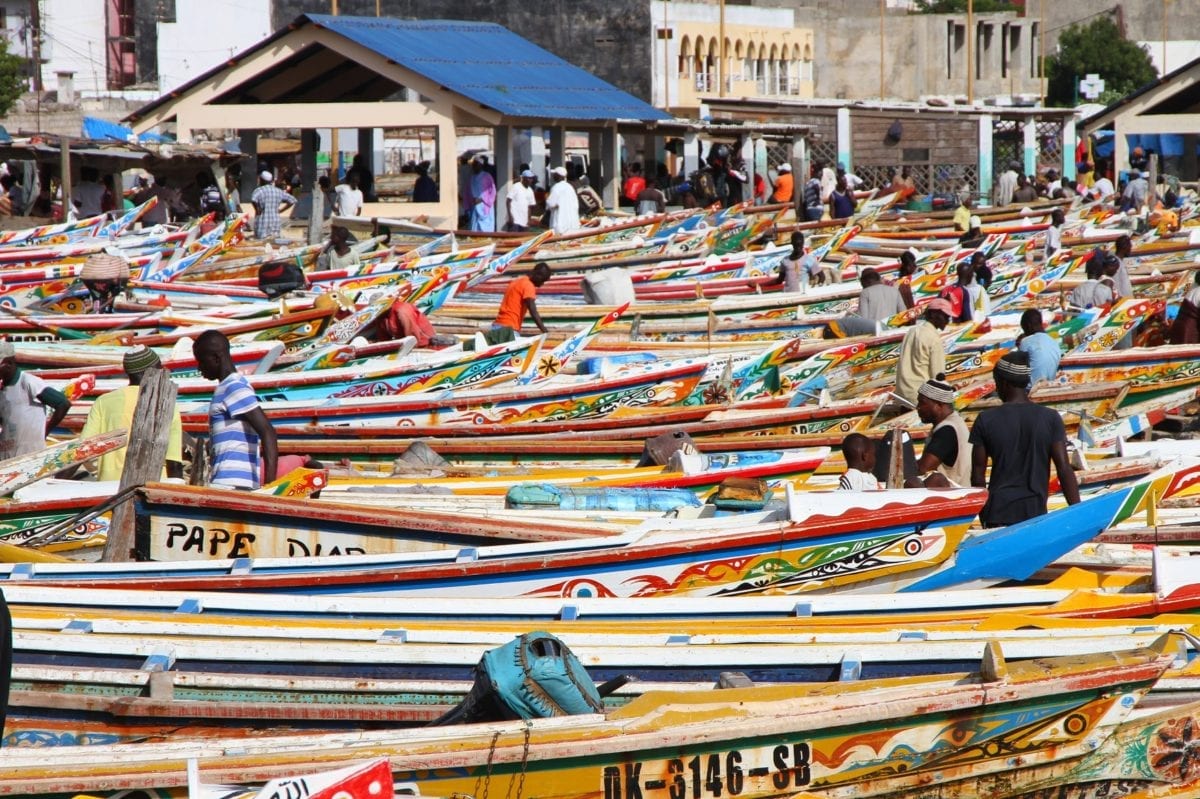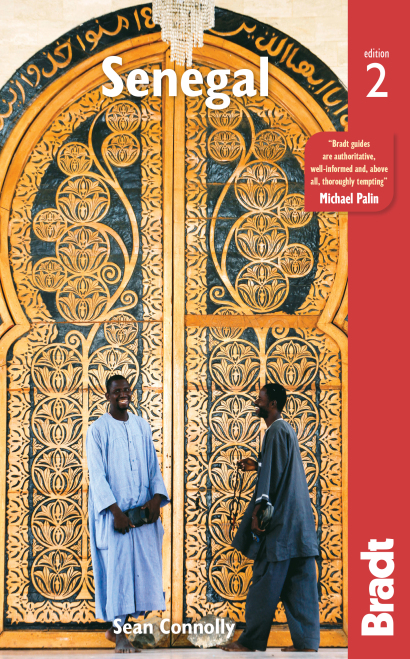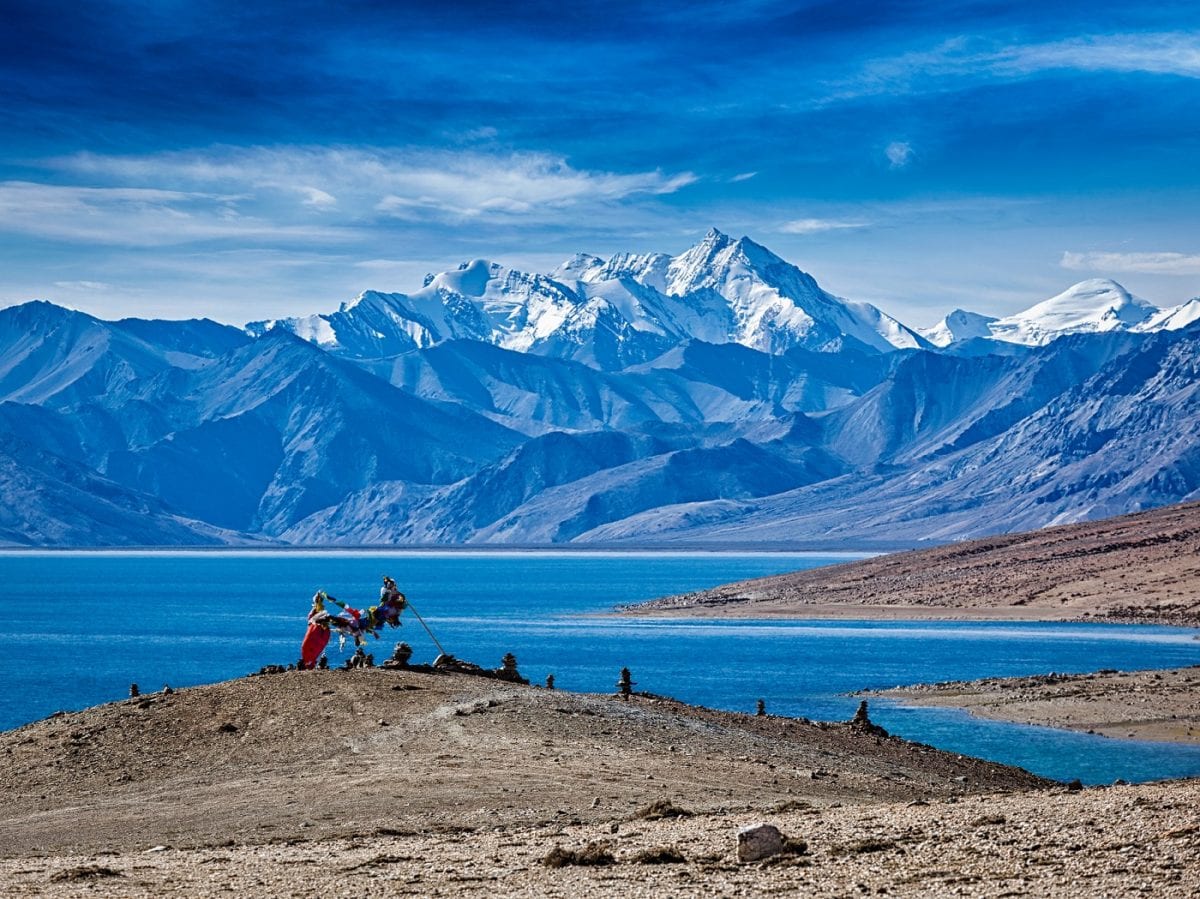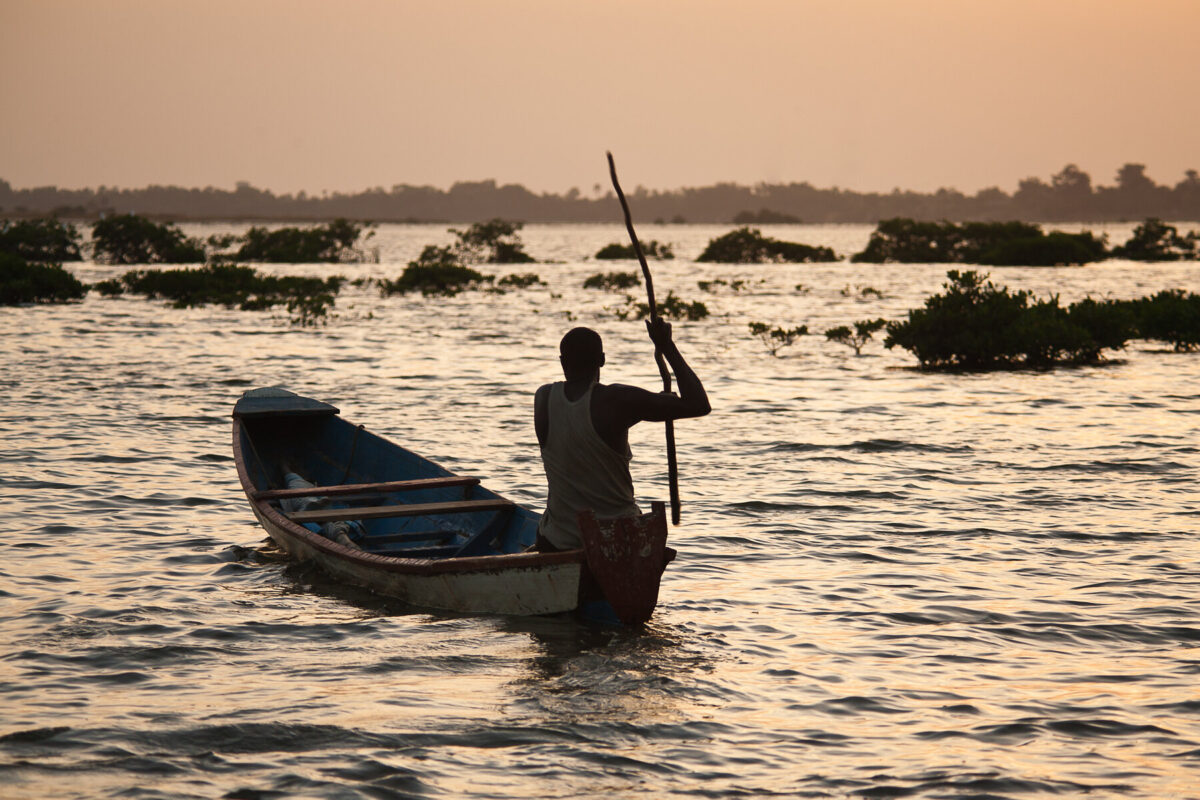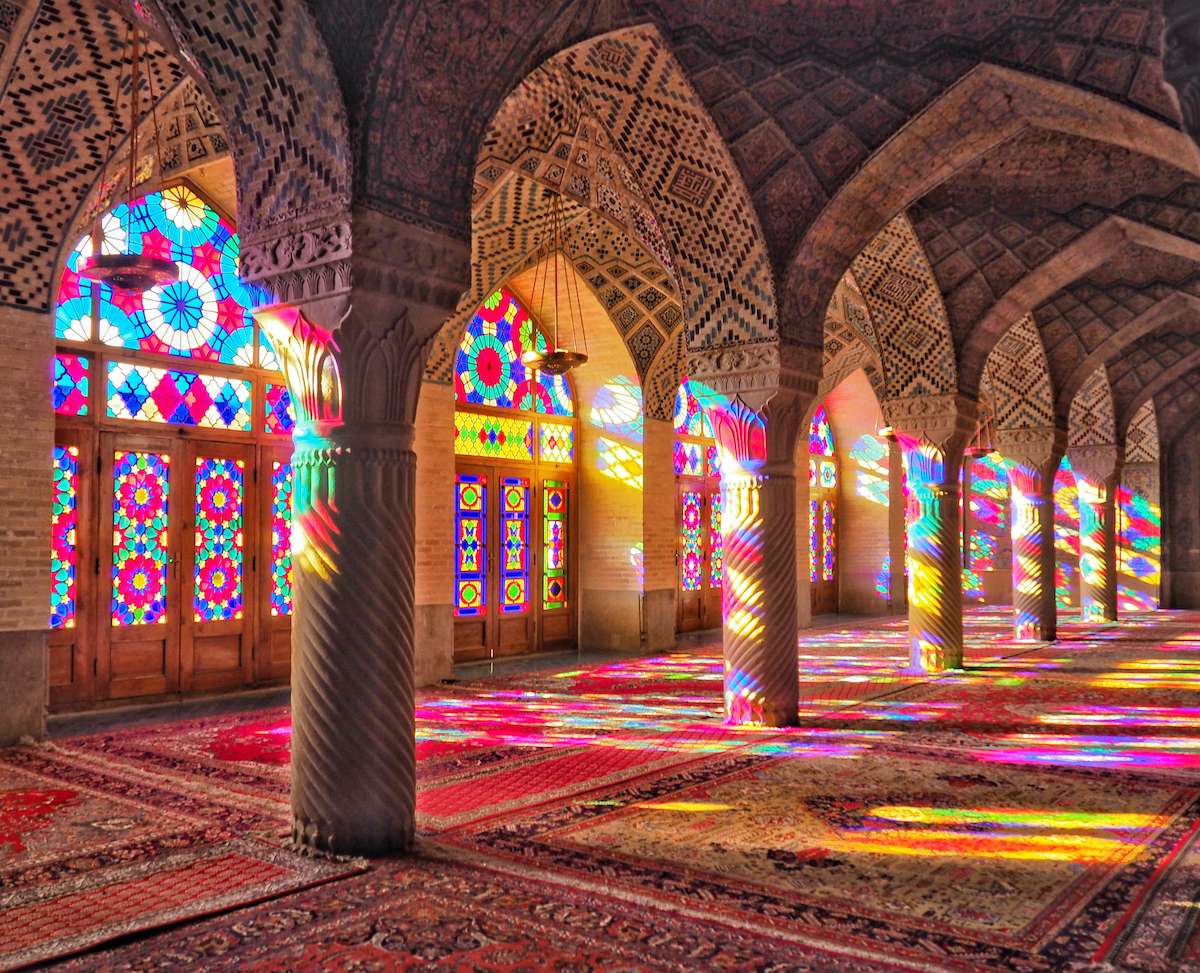Often touted as the ‘land of teranga’, which is Wolof for hospitality, the importance of welcoming guests here is not simply a tourist-brochure buzzword, but rather a concept that informs nearly all elements of Senegalese life.
Sean Connolly, author of Senegal: the Bradt Guide
Bordered by the waves of the Atlantic, the deserts of Mauritania and the impenetrable forests of Guinea, Senegal packs in remarkable diversity – it’s perfectly possible to trek green foothills, catch some world-class surf and watch a sandstorm blow in from the Sahara within a day’s journey of each other. Yet the country’s greatest treasure is the hospitality extended everywhere, whether you’ve come to dance to mbalax beats in Dakar, loll in a hammock somewhere along the Petite Côte or escape to an island lost in the rivers of Casamance.
A trip to Senegal only takes about five hours by plane from most European capitals, so it’s an enticingly accessible holiday destination whether you’re a winter sun-seeker or veteran backpacker, and the wealth and diversity of attractions on offer rivals anywhere in the region. For an architecture buff, few destinations anywhere in West Africa can match Saint-Louis’ colonial splendour, and the vernacular buildings of Casamance are to be found nowhere else in the world. Beach bums will be thoroughly spoiled on the sands of Cap Skirring or the Petite Côte, while avid hikers can head inland and lose themselves for days in the Fouta Djallon foothills, trekking between hilltops, waterfalls, and the insular villages of the Bassari and Bedik. Those seeking a true escape, however, could do no better than the tangled creeks and island villages of the Sine-Saloum and Casamance river deltas, or the lost-in-time towns of the Sahelian north, whose frontier atmosphere feels indescribably remote.
For more information, check out our guide to Senegal:
Food and drink in Senegal
Food
Held together by the common thread of the Atlantic Ocean and a near-universal love of fish and rice, Senegalese cuisine is a rich and diverse mélange of offerings informed by the country’s drastically varied geography and long, cosmopolitan history. From the locally grown rice and palm oils of the tropical south to the soured milk and traditional millet couscous much loved by pastoralist communities on the northern plains, no matter what the dish, cooking here is approached with a French-inspired flair and a reverence that will be appreciated by any traveller who’s put up with one too many slapped-together meals and plates of soggy chips.
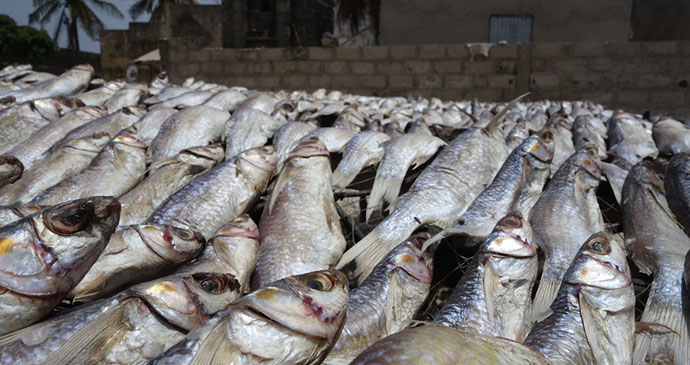
Drink
What to wash all this down with? If it’s the afternoon, the only answer is attaya, the gunpowder green tea sipped scaldingly hot and eye-wateringly sweet from the daintiest of little glasses while seated under shade trees and around coal burners in a carefully choreographed ceremony that’s replicated innumerable times in compounds across the country each and every afternoon. It shares a lot in common with the tea ceremonies further north in the Maghreb, but pure green tea is used here, without the addition of mint common north of the Sahara. Otherwise, in the morning you might be offered a glass of douté, or Kinkeliba tea, made from the boiled leaves of the Combretum micranthum bush, a plant held in particularly high esteem by the Mourides, as Ahmadou Bamba was known to espouse its curative properties. Today it’s drunk both as an all-around health tonic and as treatment for everything from liver ailments to diabetes to migraines.
Health and safety in Senegal
Health
Before the inevitable terror inspired by reading the health section sets in, it should be made quite clear that healthcare options in Senegal are among, if not the best in West Africa. There are certain health issues inherent to tropical climates, but with reasonable precautions – i.e. malaria prophylaxis – your chances of a serious incident are minute. The cast of African bogeymen so often trotted out by jittery family and friends to dissuade you from your trip (or at least question your logic) are on the whole irrelevant in Senegal, if not entirely fictitious. The one imported case of Ebola was effectively dealt with in 2014, the military are admirably professional, and if you manage to see a predator in Niokolo-Koba National Park, consider yourself very lucky. As in much of Africa, road travel presents the greatest risk to life and limb you’re likely to face.
Medical care in regional capitals is adequate, but for anything serious Dakar is very much the place to be. As with everything in Senegal, French is the operating language, but given the education required of doctors, it’s not unusual to find one who has studied some English as well. Doctor’s visits, lab fees, and malaria tests are all cheap – don’t hesitate to get checked out on the basis of cost.
Travel clinics and health information
A full list of current travel clinic websites worldwide is available on www.istm.org. For other journey preparation information, consult www.travelhealthpro.org.uk (UK) or http://wwwnc.cdc.gov/travel/ (US). Information about various medications may be found on www.netdoctor.co.uk/travel. All advice found online should be used in conjunction with expert advice received prior to or during travel.
Safety
Theft
Aside from some of Dakar’s seedier districts and certain areas of the city by night (looking at you, Corniche!), with some common-sense precautions, the risk of being separated from your valuables, either by guile or by force, remains low in Dakar, lower still in the provincial capitals, and fleeting in smaller towns and villages throughout the country.
The usual rules all apply here: bus stations and crowded markets are a pickpocket’s best friend; keep your eyes open and valuables securely stashed. Money belts are a good idea, and so is keeping cash for daily transactions in a separate location so that you don’t have to dip into the money belt in public. A reserve of cash hidden in an unlikely part of your luggage (and checked on regularly) can also be a saviour if something were to happen to your money belt. If a hotel seems reasonably secure, I typically prefer to leave valuables in a locked room (better yet, a safe if they have one) than to carry them around town with me, though this is a judgement call and you should always use your discretion.
Female travellers
Whether they want them or not, women traveling alone in Senegal will certainly not find themselves lacking for new friendship opportunities. Foreigners are the centre of attention wherever they go, and lone women only more so; it is considered unusual for a woman to travel without the company of her husband, so when the assumption of singlehood is combined with stereotypes about the relative sexual liberation of Western women, unwanted advances can at times be overwhelming. While the attention is rarely dangerous or threatening in nature, it’s wise to have a plan to brush off solicitation of the romantic variety simply in order to streamline what will be a frequent shut-down process.
Whether speaking with women or men, it is inadvisable to admit to being unmarried, and some female travellers will go so far as to wear a fake wedding ring in order to bolster their claims to being ‘taken’, which are usually respected (though not without requisite, good-natured teasing as to the superiority of Senegalese men over their Western counterparts). Even the most patient women will find it tempting to give in to their frustration at times, but this usually only ends with relentless taunting and bad blood; it’s better to respond icily to particularly aggressive suitors, which should eventually garner disinterest.
Travellers with disabilities
Given that some of Senegal’s major attractions are beaches and colonial architecture, there’s no shortage of obstacles here for people with limited mobility. Streets are potholed and sidewalks rare, lifts are few and far between, and there are quite simply few concessions made here for the disabled. Still, with some determination, flexibility and organisation, a rewarding visit could still be possible, but it will require a good deal of patience and a willingness to improvise.
Travel and visas in Senegal
Visas
Visas are issued on arrival at Dakar airport and all official land borders free of charge for stays of up to three months to holders of more than 100 different passports, including all EU/EEA states, USA, Canada, Australia, New Zealand and South Africa. Biometric visas in advance were required of all nationalities except ECOWAS (CEDEAO) citizens over 2013–15, but this requirement was scrapped entirely in May 2015. Today’s refreshingly simple policy is intended to encourage tourism after the combination of visa confusion and the Ebola crisis saw a sharp decline in tourist numbers for 2014–15. Under the current procedure, visitors must still have six months’ remaining validity on their passports, and may need to provide proof of yellow fever vaccination if arriving from a country where it’s endemic.
Longer-stay visas of six months or one year are also issued, but require proof of approved employment, training or study in Senegal. Visa extensions are also possible once in Senegal, but you will have to satisfy some of the same conditions. Inquiries should be directed to the Territorial Surveillance Directorate (Direction de la Surveillance du Territoire, DST) in Dakar, located at ‘Cité police’ on Avenue Malick Sy and Corniche Ouest.
Getting there and away
By air
It’s been a challenging decade for the Senegalese air sector. After the collapse of Air Senegal International in 2009, its replacement Senegal Airlines only lasted until 2016 before throwing in the towel themselves. The latest reincarnation, Air Senegal had their first flight in May 2018 and though there are expansion plans on the table, they were only flying between Dakar and Ziguinchor at the time of writing. Groupe Transair has proven more stable, and today runs domestic flights between Dakar and Ziguinchor, Cap Skirring, Kolda, and Tambacounda, plus international routes to Bissau (Guinea-Bissau), Conakry (Guinea), and Praia (Cabo Verde).
Overland
Five countries border Senegal: Mauritania to the north, Mali to the east, Guinea to the southwest, Guinea-Bissau to the southeast, and The Gambia smack dab in the centre. (Senegal is also the closest point on the African mainland to the islands of Cape Verde, just under 600km to the west.)
Getting around
By air
There are airports in most major centres, but only a handful of them have scheduled flights as of mid 2018. Groupe Transair serves Ziguinchor, Cap Skirring and Kolda, with more occasional flights to Matam and Tambacounda. The new Air Senegal was only flying between Dakar and Ziguinchor at the time of writing, though more routes are planned. If you’ve got the cash, Arc en Ciel Aviation does domestic and international air charters from Dakar.
Self-drive
The best places to arrange car hire for either saloon cars or 4x4s are in Dakar, the Petite Côte and Saint-Louis. Rates vary, but 4×4 hire can range from €95 to €160 per day depending on the vehicle, while a saloon car will be somewhat cheaper. You may or may not ever be asked for it, but an international driver’s licence is technically required. Depending on the firm, it’s also common practice for a driver to be included with the car hire, which adds somewhat to the cost but may represent savings on insurance fees.
If fuel isn’t included in the price, remember that you’re looking at an average cost of over €1.20/litre. Driving is on the right in Senegal. Be sure to check out your rental car thoroughly before heading off, including for two safety triangles, a fire extinguisher (check the bottom to ensure it’s not expired) and a first aid kit. Police may ask you for any of these at checkpoints and being able to produce them eliminates an easy pretext for bribe seeking, though it should be stated that most road checkpoints are reasonably low-hassle, assuming that your papers are in order.
It’s possible to cross The Gambia with a hired car, but this raises a number of issues vis-à-vis insurance, import permits and other paperwork. If you plan to cross from northern Senegal to Casamance via The Gambia, be sure to ask the car hire firm for specifics on what paperwork you might need, as well as if it would be allowed under your rental agreement in the first place.
Many self-drivers cross Senegal via Tambacounda to avoid these hassles altogether. Most main roads in Senegal are surfaced and in reasonable condition, with a few notable exceptions. The RN1 begins as a traffic-choked nightmare running parallel to the (reliably empty) new toll road leaving Dakar, and continues as a simple tarmac road all the way to Kidira on the Mali border. It’s surfaced the whole way, but some stretches, notably from Fatick to Kaolack, are terribly potholed.
The RN2 picks up at the village of Diamniadio outside Dakar, heads north to Saint-Louis, then follows the northern border eastwards all the way down to Kidira, where it meets the RN1 again. It’s in fair to excellent shape until Ndioum, from where you’re back in pothole country all the way to Kidira. The RN3 begins in Thiès and connects to Touba, Linguère, and eventually Ourossogui. It’s in good shape to Touba, rougher to Linguère, and fantastic for the last stretch to Ourossogui.
The RN4, otherwise known as the Trans-Gambia Highway, picks up at Kaolack and is fair to good tarmac all the way through The Gambia to Ziguinchor, with the notable exception of a deplorable 25km from Nioro du Rip to the Gambian border. The RN5 also originates in Kaolack, but starts its journey towards Toubacouta and The Gambia in rather rough shape.
It’s good, newish tarmac from The Gambia’s southern border to the terminus at Bignona, though. The RN6 is beautiful new tarmac from Tambacounda to Manda, terrible potholes to Vélingara, and a mixed bag of roadworks until you reach Kolda. Westwards from Kolda, the RN6 is in such deplorable shape that nearly all traffic to Ziguinchor goes via Bounkilling and Bignona (though comprehensive road works on this stretch began in 2014). Finally, the RN7 is in good shape, some of it brand new, from Tambacounda to Kédougou.
By public transport
The sept place (seven place) is the bedrock of all road transportation in Senegal, and generally takes the form of a battered Peugeot 505 wagon with three rows of seats: room for two in front, three in the middle, and three in back. The seats are sold on a first-come, first-served basis, and those in the very rear are the least comfortable by far.
Ticket prices are set by the transport union, and as such are very rarely inflated or otherwise tampered with. You should receive a ticket with the price (usually illegibly) scrawled on it, and all passengers will pay the same amount. If in doubt, don’t be afraid to ask a fellow passenger. Since the ticket prices are fixed, baggage fees are usually levied, and this is where conductors will try and squeeze you for some extra money.
It’s something of a free-for-all in terms of what you’re expected to pay, though unsurprisingly, the larger the bag and the longer the ride, the higher the price. As a rough indicator, a journey of six hours or less with a medium travel backpack will run you about 500F if you’re firm on the price, but for trips longer than this, heartfelt pleas are sure to be made about the length of the journey or state of the roads, and you can expect to pay about 1000F.
Besides the sept place, other intercity transport options include the ndiaga ndiaye, which are hulking old Mercedes 508D trucks with ‘Alhamdoulilah’ painted on the front, and somewhere between 30 and 40 people squeezed into the back. They’re cheaper than sept places, but take considerably longer because passengers (and all their baggage) are constantly mounting and alighting. Buses (many operated by the Mouride brotherhood and known as cars mourides) also cover intercity transport, and these range from reasonably comfortable private services (like the recommended new parastatal Senegal Dem Dikk) to clapped-out and overloaded jalopies. On both ndiaga ndiayes and buses your baggage will typically ride for free, though a small fee isn’t unheard of.
Each town in Senegal has a central gare routière where you can pick up buses, sept places, and ndiaga ndiayes to destinations near and far. There are a small number of private bus companies that run regular cross-country services on fixed timetables, and these arrive and depart from their own offices rather than the gare routière.
By boat
Plying the waters between northern Senegal and Casamance, the MV Aline Sitoe Diatta, Diambogne and Anguène ferry a plethora of people, cars, and goods between Dakar and Ziguinchor (sometimes via Carabane) four times weekly. Up north, the fabulously restored Bou el Mogdad runs six-night luxury river cruises between Saint-Louis and Podor. Aside from these two vessels, any other aquatic excursions you’re likely to take will be in a motorised pirogue or fishing boat. This is the best way to get around in the Sine-Saloum Delta; boat connections through the labyrinthine mangrove swamps between centres like Toubacouta, Palmarin, Mar Lodj and others are all easily arranged.
When to visit Senegal
While it’s perfectly possible to visit Senegal at any time of year, tourism here is highly seasonal and you’ll get a very different experience depending on when you show up. November to March is the core tourist season, peaking over the holidays, when you should absolutely make reservations in advance and expect to pay a premium on all accommodation (though if you’re interested in spending the holidays in Senegal, many of the larger hotels offer packages). The weather is relatively cool and dry, and you’ll be glad to have your sweater – the average low temperature in Dakar is under 20˚C for most of the season, with highs closer to 27°C. It’s also the time for birders, as all the European migrants are in town.
Expect hotter temperatures from April to June, but the rain is still some months away and a number of Senegal’s coolest cultural festivals take place in these months, like the Saint-Louis Jazz Fest, Dak’art Biennial, and the annual Bassari initiations. In June the rains start to hit, and they stick around until September or October, depending on where you are. (They start earlier and finish later in the south.) This is when many places (including hotels, national parks and restaurants) start to close up shop for the season and, while this means your plans might be interrupted by closures, you’ll be one of the few tourists in town – hello, empty beaches and negotiable prices. Another payback for the sometimes oppressive humidity is the riot of greenery that erupts all over the country, turning parched earth lush, filling rivers and sending waterfalls crashing over their precipices nearly overnight. Transport in the wet season isn’t the problem that it used to be as nearly all of Senegal’s trunk roads are now surfaced, but it’s still possible to run into issues off the beaten track.
Climate
Senegal essentially has two seasons, rainy and dry. The rainy season, commonly known as hivernage, runs from about June until September or October, but it varies greatly in length and intensity depending on where you are in the country, and the north gets only 300–350mm of rain annually as compared with the 1,000–1,500mm that fall in the south. Starting in October, the rains taper off and (relatively) cool and dry conditions prevail for the next several months. Not coincidentally, this is the peak tourism season. The hot, dry and dusty harmattan winds also start to blow in from the Sahara around this time, and these prevail until temperatures once again start to climb around April and the rains follow once again in June.
What to see and do in Senegal
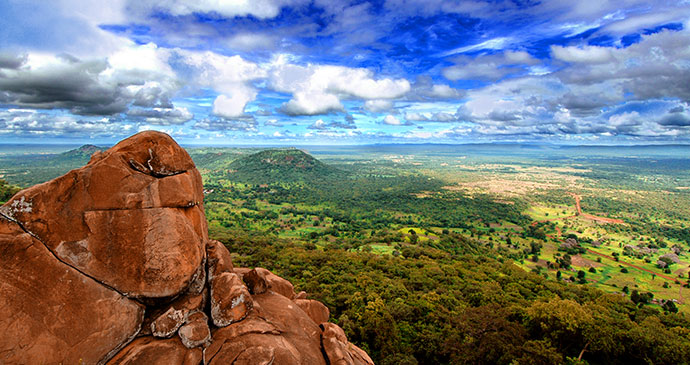
Parc National du Niokolo-Koba
Inscribed as a UNESCO World Heritage Site in 1981 and ignominiously added to the list of Endangered World Heritage Sites in 2007, Parc National du Niokolo-Koba extends over 9,130km2 of river, savannah and gallery forest southeast of Tambacounda, and represents the largest and wildest area of protected and uninhabited land in Senegal. The habitats here vary between wide expanses of Sudan-Guinea savannah punctuated by riverine stretches of gallery forest, floodplains, marshes and even a few hills towards the southeast of the park, which peak at the rarely visited 311m Mount Assirik. Most of the easily accessed areas of the park lie along the Gambia River, but the park also takes in the rambling watercourses of several tributaries, including the Koulountou and the park’s namesake river, the Niokolo-Koba.
Since 1985, Niokolo-Koba has also been contiguous with Guinea’s much smaller (382km2) Badiar National Park, which lies just across the border to the south (though there are no legal crossings or roads between them). Cut into two uneven halves by the RN7, nearly all tourist activity in the park takes place in the southern section, and the main hotel and ranger station are both located at Simenti (no prizes for guessing the etymology), which sits between an impressive lagoon (mare de Simenti) and the Gambia River, just over 30km into the park from the entrance gate at Dar Salam.
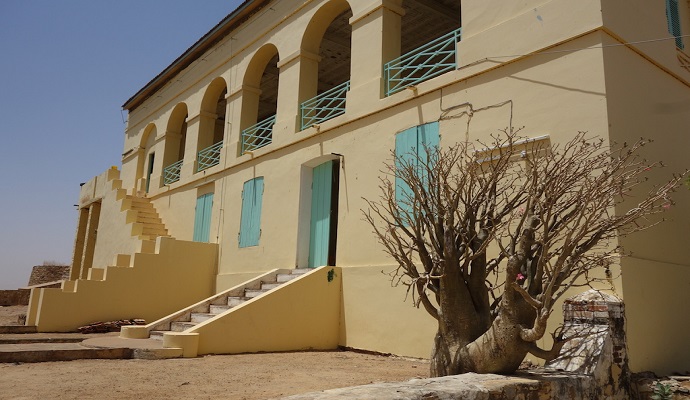
Bakel
The most remote and possibly most appealing of all the towns along the river route, Bakel is set amongst some gentle, baobab-studded hills (very gentle – this is still Senegal, after all) on the west bank of the Senegal River, the last settlement of any size before Senegal’s namesake river leaves the country entirely at the tri point border with Mali and Mauritania. It was founded in the 18th century by migrants from the Jolof Kingdom; they were granted a concession of land at Bakel from the Soninke tunka (king) of Galam, which ruled the area until the French negotiated rights to build a fort here in 1820, eventually exerting control over the entire region. Over the next 30 years Bakel became the most important trading centre in the area and, though the instability of Omar Tall’s neighbouring Toucouleur Empire led to difficulties maintaining the settlement, it remained the region’s primary trading entrepôt until eventually being overtaken in importance by Kayes in Mali, where road, rail and river all converged.
In 1989, Bakel was where one of Senegal’s most serious crises outside of Casamance began, when a localised but fatal conflict between Mauritanian herders and Senegalese farmers over grazing rights touched off a diplomatic feud and ethnic pogroms against those perceived to be citizens of the opposing country, typically along racial lines. Senegalese and Mauritanian interests in Nouakchott and Dakar were torched and dozens killed, the border was closed, and diplomatic relations between the two countries were severed. In less than two months’ time, an estimated 170,000 Mauritanians and 75,000 Senegalese had fled to their country of origin, and as many as 53,000 Fulbe, Toucouleur and other Mauritanian citizens of black African ethnicities were labelled as foreigners and forced into Senegal. Some 13,500 Mauritanian refugees remain in villages along the Senegalese side of the river as of 2017.
Today, however, the situation could hardly be calmer. Pirogues laden with cement, cooking oil and other goods where there’s a significant price differential between the two countries do a brisk trade – sometimes openly, sometimes clandestinely – and there’s a functioning immigration post at either side of the river. The impressive fort still stands guard over a magnificent bend in the blue-green river, but today the long-rusted cannons guarding the gates serve as a drying rack for the local washerwomen. It’s one of Senegal’s remotest and hottest towns, but even though its time as the upper Senegal’s major hub is long consigned to the days of yore, Bakel today still looks and feels a lot more active than crumbling Matam or otherworldly Podor.
Podor
At the edge of the Sahara and at the same latitude as Timbuktu, Podor, Senegal’s northernmost town, looks like another planet, feels like an oven and sounds like the hush of a forest after fresh snow. The buildings, laid out along the river in a neat colonial grid, share the burnt saffron tones of the surrounding lands, and it feels more like an organic, earthen village than it does a district capital, only one located on Mars, perhaps. Sweltering and silent, you can hear for blocks around when one of the few resident vehicles starts cranking its timeworn motor, or when a stifling Mauritanian wind comes calling with its wholly predictable gift of sand and dust. It’s also a place of some antiquity, part of the Tekrour state at the turn of the last millennium, then falling under the influence of the Denanke Kingdom for some centuries until the Imamate of Fouta Toro took hold of the region in 1776. The French established a trading post here in the mid 18th century, and many of the venerable quayside buildings now being restored are former traders’ homes and warehouses dating to the late 1700s. The fort didn’t take its modern shape until 1854, when it was expanded and reinforced as part of Faidherbe’s drive to solidify French control over river trade.
Today there’s little to do in Podor but soak up the atmosphere, and perhaps there’s something about its otherworldly, meditative air that acts as an incubator for the creative, as Podor punches well above its featherweight population when it comes to the arts. Singer and guitarist Baaba Maal is a hometown hero, and next to Youssou N’Dour, is probably the most famous Senegalese in the world. He sings in Pulaar and has released dozens of albums, including collaborations with fellow Podorois musician Mansour Seck. Award-winning fashion designer Oumou Sy is another of Podor’s native daughters; she launched the now-indispensable Dakar Fashion Week, opened boutiques in Paris and Geneva, and designs outfits for film and stage productions, as well as for her contemporaries like Baaba Maal himself. Behind the lens documenting it all until his recent death in 2016 was Podor’s resident photographer, Oumar Ly, whose studio portraits and decades-long documentation of life in the community found wide acclaim in the final years of his life, with exhibitions in Dakar, Europe and beyond.
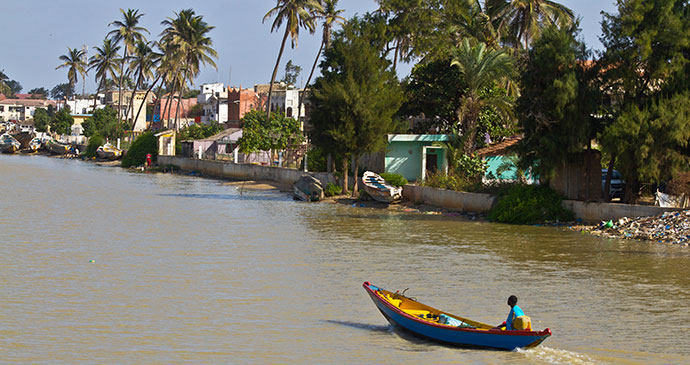
Saint-Louis
Dripping with balconies and bougainvillea, the stately ochre homes and warehouses of old Saint-Louis, with their toothless wooden shutters and Marseillaise clay roof tiles, are the steadfast and picturesque guardians of one of the most intensely atmospheric and densely historied places in all of West Africa. Known as Ndar in Wolof, the tiny city-island sits protected by the Langue de Barbarie peninsula to the west and lapped on either side by the calm waters of the Senegal River as they make their final approach to the Atlantic.
As the crossroads of Senegal’s north, Saint-Louis has a population as diverse as its history, and the island’s grid of sandblown streets are home to Wolof merchants in perfectly starched boubous and Moroccan babouche slippers, Mauritanian shopkeepers forever adjusting their impossibly large blue robes, scarified Toucouleurs proudly sporting their beauty marks, Baye Fall devotees piled high with leather gris-gris, and the island’s indigènes, the mixed-race descendants of the Métis signares, who can occasionally be spotted in their traditional flowing white gowns.
The orderly streets here radiate history, and perhaps never more visibly than in the early evening, when the thick clay walls of the city glow with the accumulated heat of the day, insulating against the cool ocean winds that whip in from the west. Doors are flung open, televisions switched on, and residents hiding from the afternoon sun once again dare to come out on to the streets and take their evening promenade, making the rounds from family to family, tending friendships that trace their roots not only to childhood, but sometimes two, three and even more generations back amongst the old families of the island. Listen out for drums – it’s not uncommon for a family to simply close off one of the back streets in front of their home to celebrate a wedding or other event with an impromptu street party and a sabar band. Saint-Louis is in many ways the feather in Senegal’s cap, and a startlingly lucid window into the long and difficult history of this rapidly modernising country, where traces of the past can and do disappear by the day. Any visitor who doesn’t make the trip up here is missing out not only on one of Senegal’s most fascinating destinations, but on a chance to physically and intellectually engage with the places and events that have shaped the Senegal of today.
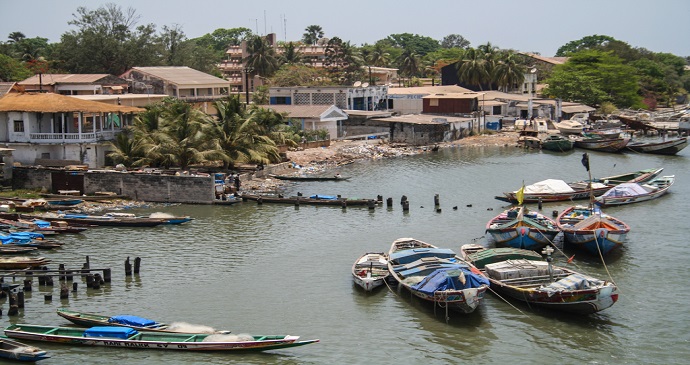
The Sine-Saloum and Casamance
Sine-Saloum
Recognised in various overlapping permutations as a national park, Important Bird Area, UNESCO World Heritage Site and RAMSAR wetland, it’s safe to say the Sine-Saloum Delta is nothing short of spectacular and that you should make your way down here post haste – any visit to Senegal without at least a peek into this wild and disorienting expanse of saline bolongs (creeks), lofty palms, gnarled baobabs, surreal shell islands, ancient burial mounds and a bewildering expanse of mangroves larger than the world’s 25 smallest countries would be woefully incomplete. This is where the Sine, Saloum and Diombos rivers meet the ocean, and is the heartland of the fiercely independent Serer people, who, despite making up less than 15% of Senegal’s population, count among their ranks both of Senegal’s first two presidents, ‘the father of African cinema’ Ousmane Sembène and global superstar musician Youssou N’Dour. As with the rest of Senegal, Islam plays an important rôle here, but in the delta Christianity and traditional beliefs predominate, and Sunday morning mass is often even busier than Friday afternoon prayers.
The countless islands of the delta are home to dozens of fishing villages ranging from decently sized to downright diminutive, but outside of these settlements, a patchwork of uninhabited land, tidal flats, rivers, and ocean is protected as a part of the 76,000ha Sine-Saloum National Park. Most trips into the delta offered by tour operators or hotels will end up in the national park, so it’s usually not necessary to liaise with the park authorities directly. The northern sector, including the Pointe de Sangomar, is most easily accessed from Palmarin, Mar Lodj or Ndangane, while the southern bit, including the Île aux Oiseaux and surrounds, is better reached from Toubacouta or Missirah.
Casamance
For travellers with a penchant for the faraway, Basse (lower) Casamance and its agreeably dishevelled capital at Ziguinchor are quite simply an embarrassment of riches. With seemingly endless tracts of spiralling mangrove labyrinths playing host to rare river dolphins, manatees and dozens of hidden traditional villages, this is quite simply the best place in Senegal to disappear right off the map, and it’s got absolutely nothing to do with rebels. While today it’s easier to get around the compact region than it’s ever been, in its further reaches it would be possible to spend days travelling Basse Casamance on nothing but footpaths and bolongs, let alone a surfaced road. Still, if your idea of a vacation is more piña colada than canoe and paddle, Basse Casamance has you covered as well. Home to nearly 30km of powder-fine beaches centred on Cap Skirring, Senegal’s largest resort colony outside of Saly, and a wilder but equally dazzling 30km stretch north of the river from the Presqu’Île aux Oiseaux to the Gambian border at Niafourang, Casamance has something for sun worshippers and adventurers of all stripes.
Lush, tropical and covered in a bewilderingly dense maze of forest, mangrove, and an uncountable number of creeks, Basse Casamance both looks and feels a very long way from the baking plains and wide expanses of Senegal’s north. Cut off from the rest of the country by The Gambia, Basse Casamance is not only a geographical place apart, but a cultural and political one as well and, as a traveller here, it’s easy to feel you’ve arrived in an entirely different country. Indeed, today it’s also a religious anomaly in overwhelmingly Islamic Senegal, as Animism is practised openly and comparatively widely, and Catholics represent a higher percentage of the population here than in any other region, though neither Christianity nor Islam made significant inroads here before the late 1800s, already centuries after Islam established itself in the north of the country. Homeland to the Diola people, the pre-colonial political and state structures here were, in sharp contrast to their neighbours, comparatively egalitarian, and lacked the rigid social hierarchies and permanent warrior, priestly and ruling classes of Wolof and Fulbe societies to the north and east. As such, a centralised Diola state never emerged in Basse Casamance, and the area remained a pastiche of small traditional chieftancies operating at the village level, and a few small kingdoms like Blouf, Bandial (Mof Awi) and Floup, all of which retain some ceremonial relevance today, particularly Floup, centred in Oussouye.
Petite Côte
At the very heart of Senegal’s tourism industry, the sun-soaked shores and gentle blue waters of the Petite Côte are prime postcard material, and tens of thousands of visitors flock here annually, tracing the countless wing-beats of their avian neighbours also headed south for some winter sun. The coast is home to an eclectic cluster of settlements, but this is the one part of Senegal where package tourism is truly king, and many visitors see no more of the country than their resort and the recently shortened route to the new airport, built barely 30km from Saly with exactly these visitors in mind.
Still, there are something like a dozen easily accessible settlements scattered along the shore here, and while all enjoy their own slice of the dazzling waterfront for which the coast here is famous, they are otherwise an incongruous and enticingly eclectic mix, offering everything from djembe dance lessons and dibiterie to hot stone massage and charcuterie. Thus, whether you’re seeking authenticity and starry nights or indulgence and laser lights, there’s room enough for all on the sands of the Petite Côte. In sharp contrast to the windswept Grande Côte to the north, the waterfront here is protected from strong ocean currents by the Cap Vert peninsula; the Petite Côte traces a white sand arc for nearly 100km southeast from Dakar, until it finally trails off into the serpentine channels and mangrove islands of the Sine Saloum Delta at Joal-Fadiouth. Between these two points, life for both tourists and locals largely revolves around one thing: the beach. Every morning in Mbour, sinewy, sure-footed fisherman hurl their pirogues into the water and manhandle their shimmering, fish-laden nets back out by night, while a few kilometres up the sand in Saly, well-oiled Europeans bronze themselves (or attempt to), try their hands at all variety of watersports, or sip drinks whose colours compete with the landscape for the title of most tropical.
Parc National des Oiseaux du Djoudj
On an inland delta southeast of the Senegal River, this 16,000ha park was gazetted by the Senegalese government in 1971, listed as a Ramsar Wetland of International Importance in 1977 and declared a UNESCO World Heritage Site in 1981. Across the river in Mauritania, Diawling National Park is has been contiguous with Djoudj since its gazetting in 1991, bringing over 32,000 uninterrupted hectares under protection. Situated on an inland delta just southeast of the Senegal River, the park is afforded by multiple layers of recognition and protection afforded to the park are indicative of its massive importance to African and European birdlife, particularly Palearctic migrants.
The first permanent water source south of the Sahara, Djoudj is the destination for hundreds of thousands of birds as they depart Europe and cross the wastes of the Sahara in search of more amenable climes both here and further south. Seasonally inundated, the park is crisscrossed by a lush, labyrinthine network of brackish marshes, lakes and tidal streams that are visited by 3,000,000 birds annually, with no less than 350 different species represented among them. The terrestrial fauna here isn’t quite as exciting, but you’re still very likely to spot at least a few warthogs (Phacochoerus africanus), possibly some red-fronted (Eudorcas rufifrons) or Dorcas gazelles (Gazella dorcas), and with a real stroke of luck, perhaps an African manatee (Trichechus senegalensis) gliding silently by.
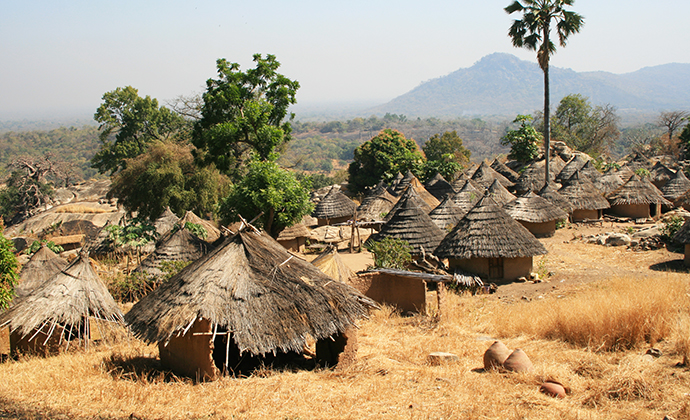
Kédougou
Kédougou itself is a thoroughly agreeable provincial capital with a diverse and growing population. Long a sleepy river town at the end of the road and the very edge of the country, Kédougou is expanding rapidly, spurred on since the early 2000s by a global spike in gold prices that has brought massive commercial investment to the once-artisanal mining that has taken place here for hundreds of years. Add to this the recently completed tarmac route to Mali (now the shortest way from Dakar to Bamako), and Kédougou is looking more and more like a boomtown every day. That being said, it’s still an easygoing place where horse-drawn calèches and house-sized mining equipment jostle for position on the few tarmac roads through town. There isn’t a whole lot to detain a tourist in the city itself, but it has banks, internet and a good selection of accommodation, and it’s the obvious base to arrange trips throughout the region.
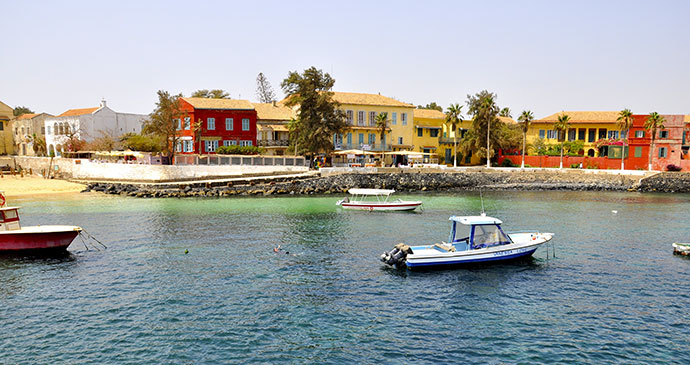
Île de Gorée
Built from old walls, populated by old ghosts, and wrapped in the folds of old silences, Île de Gorée is within easy grasp of the the past, unvarnished in all its glories and horrors, despite being barely 20 minutes and 3km from the monuments and motorways of forward-looking Dakar and its shimmering, shape-shifting landscape across the water. Without a car or tarred road on the entirety of the island, Gorée’s 36 hectares are as striking an antidote to its younger sibling across the water as can be imagined. Narrow sand-and-cobblestone streets shaded with palms and baobabs wend their way between the thick pastel walls of centuries-old homes, some bright and newly restored, others assuming the cracks and imperfections of venerable old age, all of them home to a close-knit village of families, some of whose roots on the island go back centuries.
Gorée’s tranquillity today belies a sordid and tortured history, and the island has long been synonymous with the slave trade. It remains among the best-preserved of hundreds of major and minor entrepôts along the West African coast, where abducted Africans were imprisoned to await the detestable prison ships that would periodically arrive to haul them off yet again, this time to either their deaths on the Atlantic during the Middle Passage or, for the survivors, slavery in the Americas. As such, a visit to Gorée can be deeply contemplative and intensely emotional. The quietness of the island allows those so inclined a space for meditation on the raw wounds of a human tragedy that are far from fully healed.
Many visitors come to Gorée on a day trip from Dakar but, if you have the time, it’s absolutely worth spending a night on the island and absorbing the hush that descends on the streets after each departing ferry takes more visitors, souvenir sellers, and would-be tour guides back across the water for the night. Locals promenade on the streets and go visiting from house to house, and the quayside here is as fine a place to feel the day slip into darkness as there is anywhere in Senegal.
Cap Skirring
Situated just north of Cape Roxo, where the coast finishes its longitudinal course and takes a sharp turn to the southeast as it enters Guinea-Bissau, the twin towns of Cap Skirring and Kabrousse sit at Senegal’s extreme southwestern edge, and along what could very easily be the finest beach anywhere in the country. Set beneath a dramatic escarpment (dramatic for topographically challenged Senegal, anyway) with sensational views from the top, the beach arcs its way up the coastline in a series of shallow crescent-shaped coves that are made all the more striking by the riotous vegetation climbing the hillsides behind. As far as tourist centres go, the station balnéaire or seaside resort at Cap Skirring is second only to Saly in terms of its popularity as a European holiday getaway, and the direct flights from Paris to Cap’s miniscule airport are proof.
It’s still much smaller and calmer than its Petite Côte cousin, though, and it continues to get quieter as you head down the beach towards Kabrousse, which is impressively low-key given that it’s only a few kilometres down the road from central Cap’s quad-happy main drag. As such, Cap Skirring and Kabrousse play something of a happy medium when it comes to resort towns. Yes, you’ll see plenty of wristbands, beach buggies and Club Med guests on parole from their private beach at the centre of town, but you’ll also find family-run campements, great music, lively bars, a panoply of land and seaborne activities on offer, and even if none of these things fire you one bit, there’s still that absolutely magical stretch of beach.
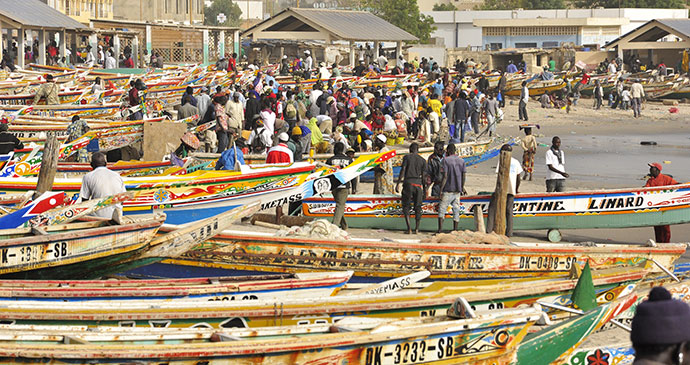
Dakar
A blast of humidity, a statue on a hill, and something sweet in the air. Arriving in Dakar is a thrill for the senses, and the city practically swims in ocean humidity, swaddling your aeroplane-desiccated body in its warm, pillowy grasp as you breeze into the city from the swish new airport outside of town. The enormous statue slowly enters your line of sight, and an ever-so-faint smell catches you by the nose. Perhaps it’s what acclaimed Polish journalist Ryszard Kapuściński called ‘the scent of the tropics’, the ‘almonds, cloves, dates and cocoa’, the ‘vanilla and laurel leaves, oranges and bananas, cardamom and saffron’ that decorate the air and fight for supremacy with the ever-present fish odours, exhaust fumes and drainpipes of a major coastal city. Or perhaps it’s just thiouraye, the gummy, herbal Senegalese incense burned over hot coals in every home, known equally for its ability to freshen a room after mealtimes as for its supposed seductive qualities.And Dakar is a master of seduction indeed. A superlative African city in every sense, the dining here is as sophisticated as you’ll get anywhere on the continent and the cultural calendar puts that of larger cities to shame. Drummers pound, singers wail, dancers flail and artists of all stripes brush, hammer, scrape and sew some of the most innovative works in West Africa, cheek-by-jowl with legions of hawkers, beggars and hustlers, and all of these dreamers and schemers crammed on to a tiny, windswept peninsula jutting deep into the Atlantic at the very edge of the continent. It’s impossible to be more than 3km from the water at any given time, and the temperate ocean drafts will have you calling to thank your mother for making you pack a sweater.
The skyline teems with rusting satellite dishes, whirling construction cranes, improbably bent antennae, flamboyant laundry, towering minarets and thousands of seagulls keeping watch over it all. Surfers colonise the peninsula’s periphery, catching waves in the traditional Lebou villages of Ngor and Yoff, while sellers dominate the interior, haggling over sticky cups of attaya in frenetic market passageways from Medina to HLM. And Plateau, the district where all Dakar’s citizens come to rub shoulders, is a dizzying mix of high fashion and urban frenzy, where business suits and boubous jostle for space on the paving stones that more often resemble a geological fault than a reasonable place to walk. The cast of characters here is worthy of any epic; street traders bent double under their wares hawk bracelets and bangles to women in precise coiffures and vertiginous heels; businessmen in skinny neckties and horn-rimmed glasses stare aimlessly into their Smartphones over dripping bites of chawarma; and Lebanese and French expats cruise past in anonymity behind the mirror tints on their 4x4s. All roads in Senegal do in fact lead to Dakar, and they could’ve hardly picked a better destination.Related articles
From boiling lakes to vast alpine bodies of water, these are our favourite lakes from around the world.
A coastal foray remains one of the most rewarding ways to see this beautiful country.
Sit back and enjoy this kaleidoscope of colours.
